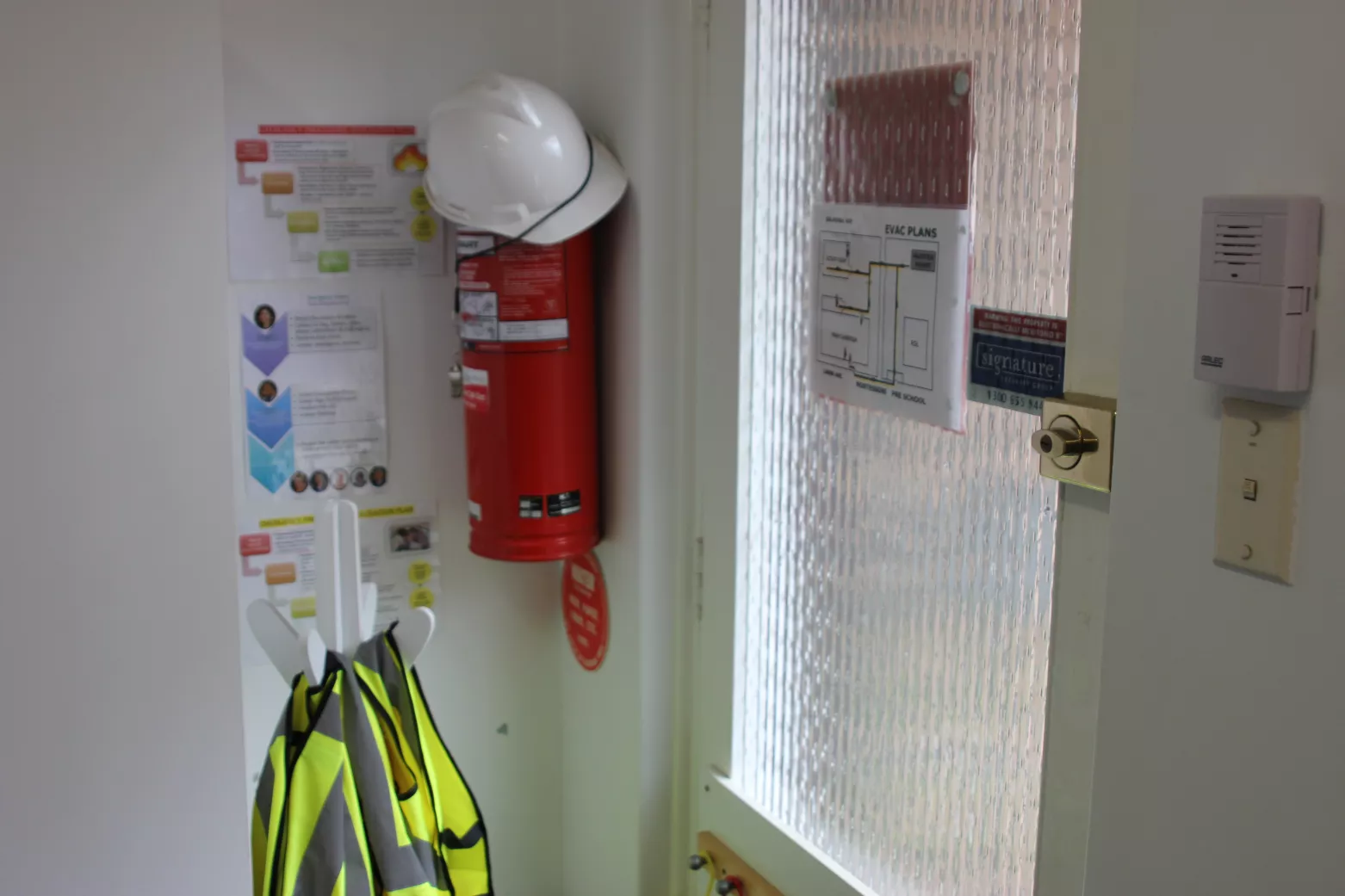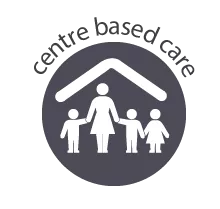Standard 2.2 Safety – Case study 3
- Home
- Quality ratings
- Exceeding NQS
- Quality Area 2 – Children's health and safety
- Standard 2.2 Safety – Case study 3
Each child is protected.


This family day care (FDC) service is situated in a regional town. The service is well connected with children’s education and care services and schools in the town through the local networking group. It also maintains connections with FDC services located in a neighbouring city via an online forum. Within both networking groups, services strive to ensure the safety, health and wellbeing of all children in the local community.
Over the past few years, local education and care services and other relevant community organisations have worked together to create a program of community events, activities and forums during National Child Protection Week. The aim of these events is to increase the awareness of everyone in the broader community of the importance of child safety and child protection and to highlight what they can do to help keep all children safe. As part of the week’s program, the family day care service and local long day care services worked together to hold an information evening for families on protective behaviours.
Families who attended this event with the FDC coordination unit staff and educators provided feedback that they found the practical strategies helpful for talking to their children about their right to be safe. This included talking to children about the warning signs they might notice in their bodies when they don’t feel safe, as well as who they can talk to and what they can do if they are feeling unsafe and not sure what to do about it. Following the evening, families asked for further information and resources about protective behaviours. Coordinators and educators also noted that participating in the session with families has helped to create a shared understanding of child safety and how as a community they can work together to keep all children safe.
To ensure that all educators remain aware of their state’s current child protection law and their roles and responsibilities under National Law, coordination unit staff also provide annual child protection refresher training. Within this training they revise their policies and procedures to ensure that everyone has a shared understanding and an awareness of their responsibilities for ensuring children’s safety. Reflecting on the approved learning frameworks, educators and co-ordination unit staff considered the newly-incorporated information and guidance about adopting and embedding a trauma-informed approach to enhance the safety and wellbeing of children who have experienced adversity.
Following a review of their training materials, coordination unit staff included several scenarios to help illustrate key ideas and concepts related to child protection issues. When recently introduced as part of the training, the scenarios proved to be valuable learning and reflection tools for educators. The ability to test and apply their knowledge against the scenarios helped educators to feel more confident about articulating their responsibilities in keeping all children safe. Through these conversations, the educators, supported by the educational leader, began to explore the scenarios’ application against other aspects of child safety, including supervision and incident and emergency management.
The service has well-established risk assessment and management systems built into everyday practice, which have been refined and improved over time through ongoing critical reflection and awareness of current recognised guidance and information sources. Educators use a range of daily risk management tools to identify and respond to potential hazards in both the indoor and outdoor learning environments. These tools have recently been reviewed against ACECQA’s Risk Assessment and Management Tool as an opportunity to further refine and improve their current processes.
Opportunities for critical reflection are also built into risk assessment and management systems. For example, educators are supported to critically reflect on their practices following emergency drills, to ensure that their processes are effective and maintain the safety and wellbeing of each child. Coordination unit staff schedule time for follow up conversations with individual educators to reflect together on what happened, what worked, and where changes could be made. Educators then review and adjust their risk assessment as part of their continuous improvement process.
At a recent team meeting of coordination unit staff and educators, an ongoing discussion point about recognising and supporting children’s agency led to educators reflecting on the extent to which they actively involve children in conversations and decision-making about keeping everyone safe, including talking about the ‘why’ behind what they do and don’t do, and where they can and can’t go at specific times throughout the day. Educators agreed that to engage children in conversations about safety, it was important they (the educators) were able to articulate what they are doing and why.
To guide this discussion, the educational leader drew on the service philosophy which, consistent with the approved learning frameworks, recognises children as ‘competent and capable learners who have rights and agency.’ They shared the definition of agency from the frameworks, of children ‘being able to make choices and decisions, to influence events and to have an impact on one’s world.’ They also highlighted an excerpt from the Guide to the National Quality Framework:
When children have opportunities to make choices, to attempt tasks, to make decisions for themselves, and to take on increasing responsibilities, they are able to recognise their influence and significance in the world and develop skills in assessing and taking calculated risks.
This led to some lively discussion and debate. Most educators believed that while they actively promoted children’s agency in the educational program and practice, there are aspects of working in FDC that create challenges, particularly with some of the risks associated with working in isolation, typically with children of varying ages, from babies to school-age children. Examples discussed included the challenges of supervising children at play while other children are sleeping, or maintaining supervision when families are arriving at the beginning and end of the day.
While some educators were uncertain about how to involve children in assessing and managing risk, most were able to see opportunities for improving current practice for keeping children safe, and more actively involving children in risk assessment. For example, some educators talked about engaging in conversations with children about safe ways to walk to school to drop off and pick up school-age children, and what makes some routes safer than others. Other educators saw potential in more actively involving children in assessing some of the daily risks they might encounter in their FDC home environment, for example what to do when someone is hurt, or if they discover a piece of play equipment is broken.
To build on the conversation and to support all educators, the educational leader posed some of the questions from ACECQA’s Risk Assessment and Management Tool in relation to supervision practices. These included ‘Which of our current supervision strategies support the development of children’s agency and emerging autonomy in play, leisure and decision making?’ and ‘How do educators encourage children of different ages to consider the potential risk of harm in their play? For example, do we use targeted questioning, modelling and narration of children’s play?’
Following vigorous discussions, these questions were posted on the service’s communication app to raise awareness of child safety issues and considerations with families, and to gain their insights and perspectives. Feedback from families was consistent with many of the educators’ views, such as the importance of keeping children safe while also providing them with opportunities to take calculated risks to build their resilience, experience agency and extend their ongoing learning and development. Some families commented that the questions had caused them to think about how they could talk to children about potential risks at home, and to seek guidance about how these risks might be avoided or addressed. For other families, it highlighted the importance of their role in supporting children to assess and manage risks, such as through role modelling and asking questions.
These conversations were documented so they can be revisited over time. Actions arising were also noted, with some educators keen to try out some of the ideas included in the Risk Assessment and Management Tool. For example, one educator was interested in using risk assessment and management tools to engage children in conversations about age-appropriate risk and safety issues. To introduce the tool, the educator decided to use puppets to review and work through past incidents, such as when a spider was found in the sandpit in the educator’s backyard, and when a broken resource was discovered in an indoor playroom.
Another educator, who was a keen gardener, involved children in making decisions about choosing new plants for their backyard garden, including a discussion about which plants might be potentially harmful and should be avoided. An educator who was planning to take children to a nearby park, shared photos with them about two different routes they could take to get there and explored with them the benefits and risks of taking one route over another. Another decided to involve children more actively in evaluating emergency drills, to encourage and listen to their views about what worked and what didn’t, and what they could do differently next time.
After trialling these approaches over several months, educators shared their reflections about what happened, what they learnt and what they could do to improve or refine these practices via their communication app. A common thread was the evidence of children’s problem solving and decision-making skills in assessing and managing risk, as well as the range of learning dispositions they displayed, including curiosity, persistence, creativity and imagination. Educators were also impressed by the older children’s care, concern and consideration of risks that might be more relevant for younger children.
Some educators shared the unexpected consequences of the work they had been undertaking with children. For example, an educator who had been trialling the risk assessment and management tools designed to be used with children, reported that some families had expressed interest in using something similar at home after hearing the positive comments from their children. The educator who was working with children to research safe and suitable plants, discussed the project with staff at their local garden nursery. As an outcome of this conversation, the educator was invited to bring the children to visit the nursery for a tour. An excursion risk assessment was completed, and the children enjoyed seeing the different plants and flowers on display. Further, and in consultation with the educator and nursery staff, the children thoughtfully chose some plants for the educator’s backyard garden.
Following these discussions, coordination unit staff raised the possibility of educators improving or refining their existing processes. There was agreement that ACECQA’s risk assessment and management tool for children be added to their assessment management processes, where applicable. It was also agreed that children’s perspectives be sought in the evaluation of emergency drills. Following the success of the inclusion of scenarios in child protection refresher training, it was also agreed this idea be replicated in ongoing training relating to supervision and incident and emergency management.
The service is looking forward to sharing their progress with other services during the next local networking group, and to hear about and learn from the work that others have been doing in relation to keeping children safe.
* To create a print friendly version of this case study, please click ‘print’ in the red menu bar.